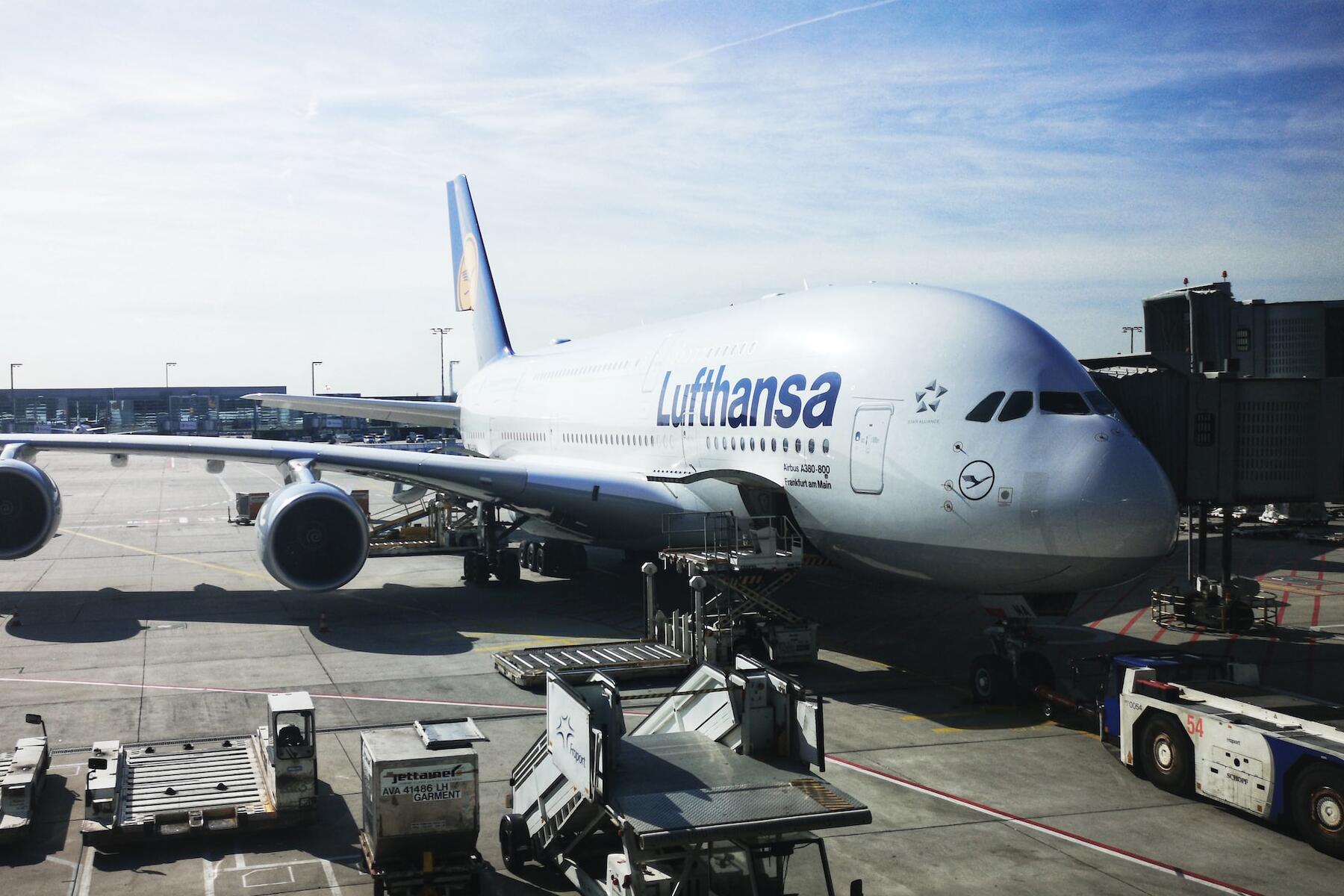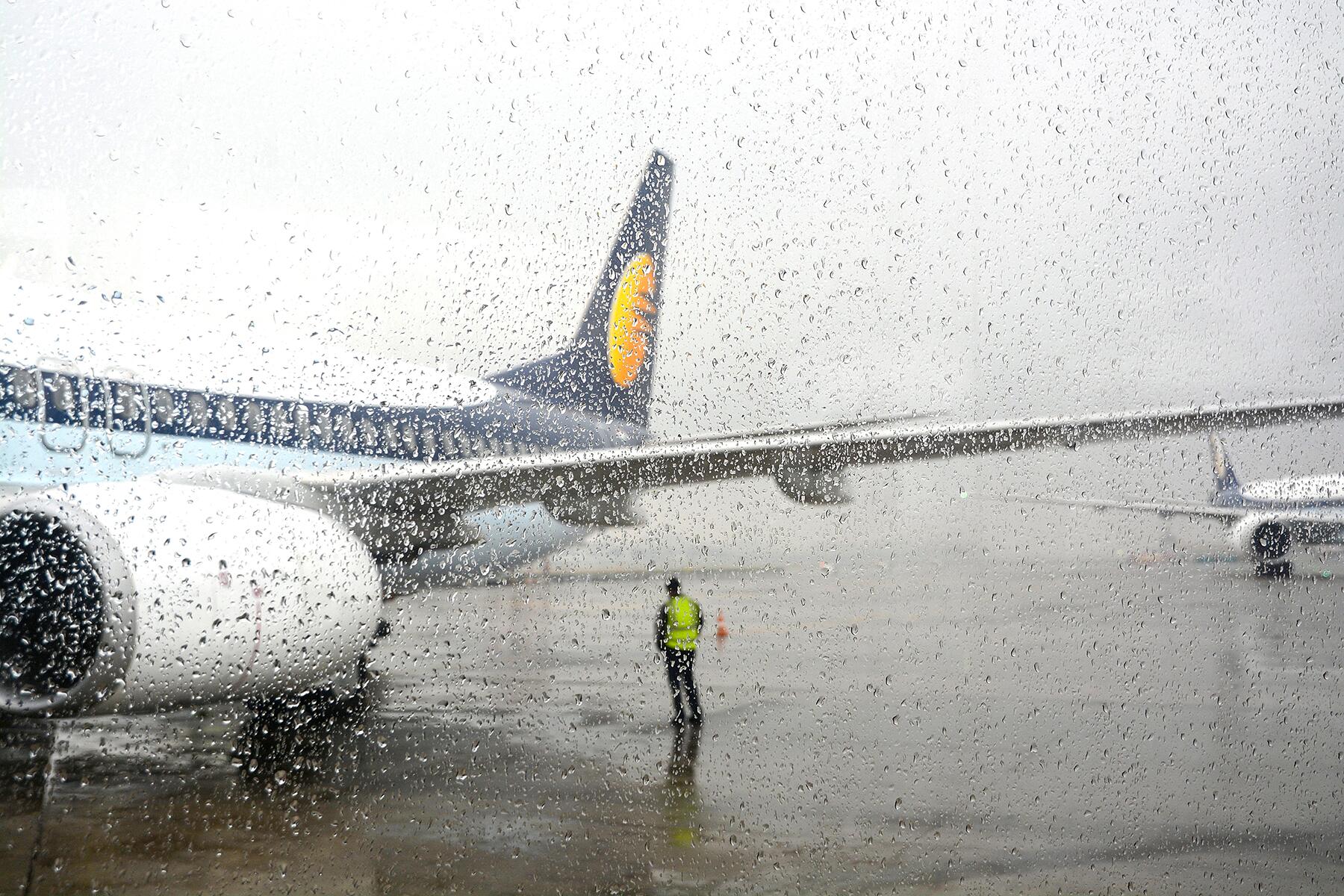Take what you can get, when you can get it—because the later options can go bad, too.
Until recently, I spent nearly two decades working in the airline industry, and it completely changed my perspective on delays and cancellations (the industry term is irrops for irregular operations). I’ve worked in various customer-facing and behind-the-scenes roles, and I’ve been interested in airline travel since my youngest days, so I’ve always been quick to jump on the What’s Actually Happening? Train instead of the Why Are Airlines So Awful? Express.
On Friday, I was in Aspen wrapping up a week in Colorado checking out the state’s newly Michelin-starred restaurants (Fodor’s has a pretty exhaustive Colorado Guide too). I was looking forward to my flight out of Aspen Pitkin County Airport (ASE) that evening, because it would be a new “dot” for my map (yes, as an airline geek, I track my flights on a map), and because the airport is famously scenic.
Snow Going
Aspen is also what pilots call “challenging.” It doesn’t mean the airfield is unsafe, it just means that there are factors that make safe operations more difficult. With an elevation of 7,820 feet, jet engines operate less efficiently, and aircraft need more runway to takeoff in the thinner air. ASE is also surrounded by mountains, so the approach is steep, and visibility minimums are high because only visual approaches (rather than approaches using instruments—common in bad weather) are permitted.
Recommended Fodor’s Video
It started snowing around midday, and by 3 p.m., my 6 p.m. flight to Denver was cancelled.
Well, I thought, I knew this airport was kind of a crapshoot with the weather.
I rebooked a flight from Aspen for the next morning. But I wasn’t done. One habit that airline employees acquire from flying standby is checking contingencies. We know that things like weather don’t always hold, and we’re going to need three or four backup plans ready to go if that happens.
So, if the Aspen flight cancelled the next morning, I could gauge the situation and see if a later flight might work. If Aspen was scrubbed the whole day, I’d look into flights from Eagle County Regional Airport near Vail, about a 90-minute drive away, or from Denver, a four-hour drive away.
Rebooking
This is where I have to sing the praises of United Airlines. They have a big hub in Denver and fly to nine airports in Colorado, so they’re used to winter weather. As soon as my Aspen flight cancelled, the United app offered rebooking for another flight from Aspen, or virtually every other airport within a 200-mile radius, including Denver. And, once I had made the changes, I could continue to make changes, so if I kept waffling back and forth between the 1 p.m. or the 3 p.m. flight, I could do that.
I decided to take my chances from Aspen in the morning. The snow was supposed to let up by about the time my flight was supposed to leave.
Checking In
I don’t mean “checking in” for the flight—I mean checking in on the flight’s progress. A little research told me that the aircraft slated to operate my flight would come in from Denver in the morning, so I woke up early and kept checking the status for that flight. If it started to delay out of Denver, I’d keep checking my contingencies.
Sure enough, right about the scheduled departure time, the flight delayed for 30 minutes. The United app gives really detailed information about the reason for flight delays, so I knew the flight was delayed because of the weather. I’d check back in 30 minutes.
It didn’t happen.
United cancelled the flight from Denver, and the return leg from Aspen. I got a push notification through the app to rebook.
I chose a 1 p.m. departure from Eagle County Airport, after checking the weather and seeing that it wasn’t snowing, and the chances of snow in the afternoon were low. Eagle County is another mountain airport, but it’s slightly more forgiving in winter weather than Aspen.
I packed up my rental car, figuring I’d sort out the details on that later (I was supposed to return it in Aspen), and headed out for Eagle County. I got as far as Glenwood Springs before I got another push notification—flight cancelled from Eagle County, and nothing available from that airport for the rest of the day.
Time for Plan D. I rebooked through the app again, this time from Denver. I’d just drive back to Denver (where I had initially been scheduled to connect to a flight back to Dallas) and catch a flight home in the evening.
Thou Shalt Not Pass
I started heading for Denver, but the weather in that direction didn’t look good. By the time I reached Eagle, the lighted signage on I-70 started indicating that vehicles without All-Wheel Drive shouldn’t attempt to cross the mountain passes to Denver because of the snow.
I started looking for accommodations for the evening in Vail, but with the passes in bad shape, on a Saturday during the height of ski season, finding a room proved difficult. I phone a friend, who had a suggestion: Grand Junction. About 90 minutes away on Colorado’s Western Slope, Grand Junction is at lower elevation, and typically doesn’t get the same winter weather.
I checked the weather for Grand Junction: clear, and United had a flight at 6 that evening. For some reason, I couldn’t choose a flight from Grand Junction in the app (although Santa Fe, some six hours away by car, came up as an option), but United has a nifty feature—you can talk to an airport Customer Service Agent on chat or video chat—just like if you were at the airport already.
I pulled into a diner in Eagle and started a chat. By the time my club sandwich had hit the table, an agent entered the chat and was able to rebook me from Grand Junction, no problem.
Grand Junction, What’s Your Function?
The drive from Eagle to Grand Junction yielded some spectacular bonus scenery, and there was almost no snow in sight when I pulled up to the Hertz parking lot at the airport. I began to wonder whether there would be some horrific red tape or some punitive drop fee for returning my rental car, late, to an airport over a hundred miles from where I said I would return it, but it turned out not to be a problem at all—in fact, they were happy to have a car returned. Weather cancellations had driven several passengers to arrive in Grand Junction instead, and they counters were mostly out of vehicles.
In Grand Junction, the check-in agent suggested standing by for the earlier flight “because the later one will probably also be delayed”. While Denver was still open, there was fog, which was slowing down operations (the United flights from Grand Junction that day would all come in from Denver).
That brings us to another airline employee rule: Take what you can get, when you can get it—because the later options can go bad too.
So, I went on the standby list for a flight that was already delayed inbound about two hours. It was what the airlines call a rolling delay—that is, the delay keeps stretching out, because other things keep getting piled on to the original delay. This becomes important later.
Wanting to know what was going on, I opened the FlightRadar24 app to track the inbound aircraft. The United app told me the inbound flight had left the gate in Denver, but hadn’t yet taken off, so it wasn’t a surprise when they kept posting a new departure time. That flight ended up so late into Grand Junction that the 6 pm flight I was confirmed on came in right behind it. They were originally both supposed to depart from the same gate several hours apart, but because they ended up on the ground at the same time, my flight parked at an adjacent gate.
My name was finally called from the standby list for the delayed flight, and I hesitated. Experience told me that when flights are already delayed, they tend to run into more speedbumps as the delays drag out. Oftentimes it means they get their resources cannibalized to keep other, on-time flights from being delayed. I stuck with my original 6 pm flight.
Because of the fog in Denver, inbound flights were being “metered”. This means that the number of arrivals per hour is reduced because of the weather, so instead of having aircraft circle the airfield burning fuel, they hold them at their departure airport instead, giving them a “slot” into the pattern at the arrival airport. In order to make our slot, my flight had to push back in the next 20 minutes, so ground staff had to rush the boarding process.
We pushed back pretty quickly after that, but the Captain chimed in and said we’d missed our slot and we’d have to wait up to 45 minutes to be fit back into the pattern. As many other passengers had connections to make in Denver, this didn’t make anybody too happy, but thankfully he was back again about five minutes later, saying that we’d been assigned the slot for the other delayed flight (which was still on the gate, having not moved), and could depart immediately. I was glad I didn’t take the earlier delayed flight, which ended up departing 40 minutes later.
Ultimately, I arrived in Denver on-time, and made my connection to Dallas on-time, arriving home exactly 24 hours later than scheduled.
The Takeaways
After a day’s delay, and a messy-looking reservation record that at times had flights departing from half the airports in Colorado over a span of two days, I made it home, but I began to consider some of the airline employee maxims that I’d been reminded of during my trip:
Use the airline’s app: Nowadays, it’s the fastest way to get information. I learned about each of my delays and cancellations via push notifications, and did all the rebooking on the app—even via chat with a live agent. When I got to Denver, I noticed a line snaking through the concourse of passengers needing to rebook. I don’t know exactly what their situations were, but I began to wonder how many of them could have used the app instead.
Track your aircraft: If the airline’s estimates for your departure time seem fishy, lookup where your aircraft is. I was able to figure out how many times my flight would continue to be delayed because I knew the aircraft was still sitting in Denver, an hour away.
Have backups for your backups: You haven’t wasted any time if you don’t use your contingencies, but you waste a lot of time by not having them. When a flight cancels, you’re one of dozens of other passengers looking for new flights—you need to be able to make decisions quickly before the seats get snapped up.
Go with your gut: If the delayed flight looks like a hot mess, it’ll probably stay that way.
Don’t sweat the details: If I had stayed in Aspen because I assumed I was required to return my rental car there, I would have been stuck another day. I did check to make sure Hertz had a location in Grand Junction before I headed that direction; otherwise I went on faith that I’d be taken care of in that irregular situation.







I'm a current airline employee, and live in Colorado. I enjoyed your story very much for both reasons, this is what we do!